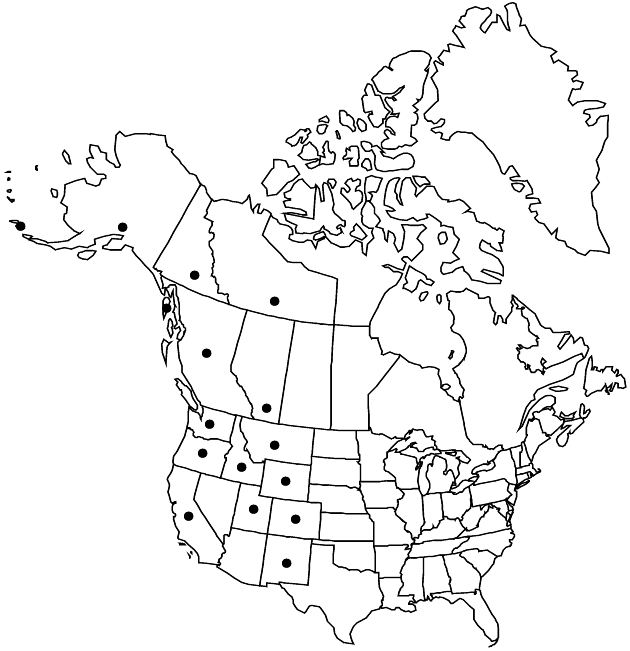Difference between revisions of "Hieracium triste"
Syst. Veg. 3: 640. 1826.
FNA>Volume Importer |
FNA>Volume Importer |
(No difference)
| |
Revision as of 18:37, 24 September 2019
Plants (3–)10–20(–40+) cm. Stems proximally glabrous or stellate-pubescent, distally usually piloso-hirsute (hairs 1–8+ mm) and/or stellate-pubescent and/or stipitate-glandular, sometimes glabrous. Leaves: basal (3–)5–12+, cauline 0–2(–3+); blades obovate to spatulate or oblanceolate, (15–)25–40(–60+) × 5–10(–25+) mm, lengths 2–3+ times widths, bases cuneate, margins usually entire, rarely denticulate, apices rounded to obtuse (often apiculate), faces usually glabrous, sometimes stipitate-glandular and/or scabrellous. Heads usually 2–8+ in corymbiform arrays, sometimes borne singly. Peduncles stellate-pubescent and stipitate-glandular. Calyculi: bractlets 5–8+. Involucres ± campanulate, (6–)7–10 mm. Phyllaries 13–21+, apices acuminate, abaxial faces piloso-hirsute (hairs 1–3+ mm), stellate-pubescent, and stipitate-glandular. Florets 20–60+; corollas yellow, 5–6 mm. Cypselae columnar, 1.5–3.5 mm; pappi of 30–40+ white or sordid bristles in ± 2 series, 4–5 mm.
Phenology: Flowering (Jun–)Jul–Aug(–Sep).
Habitat: Rocky slopes, stream sides, conifer forests, drying meadows, subalpine meadows
Elevation: 100–3500 m
Distribution

Alta., B.C., N.W.T., Yukon, Alaska, Calif., Colo., Idaho, Mont., N.Mex., Oreg., Utah, Wash., Wyo.
Discussion
Selected References
None.